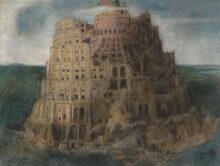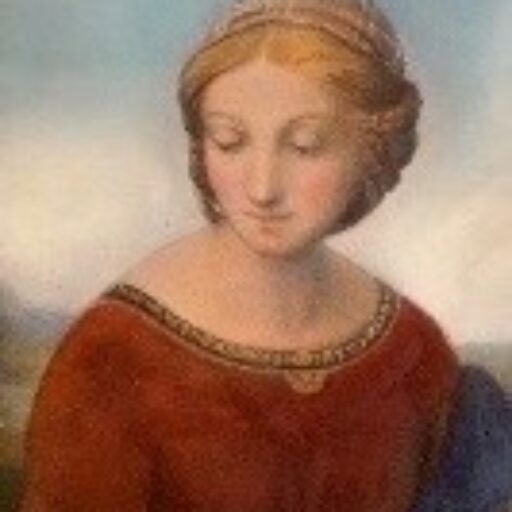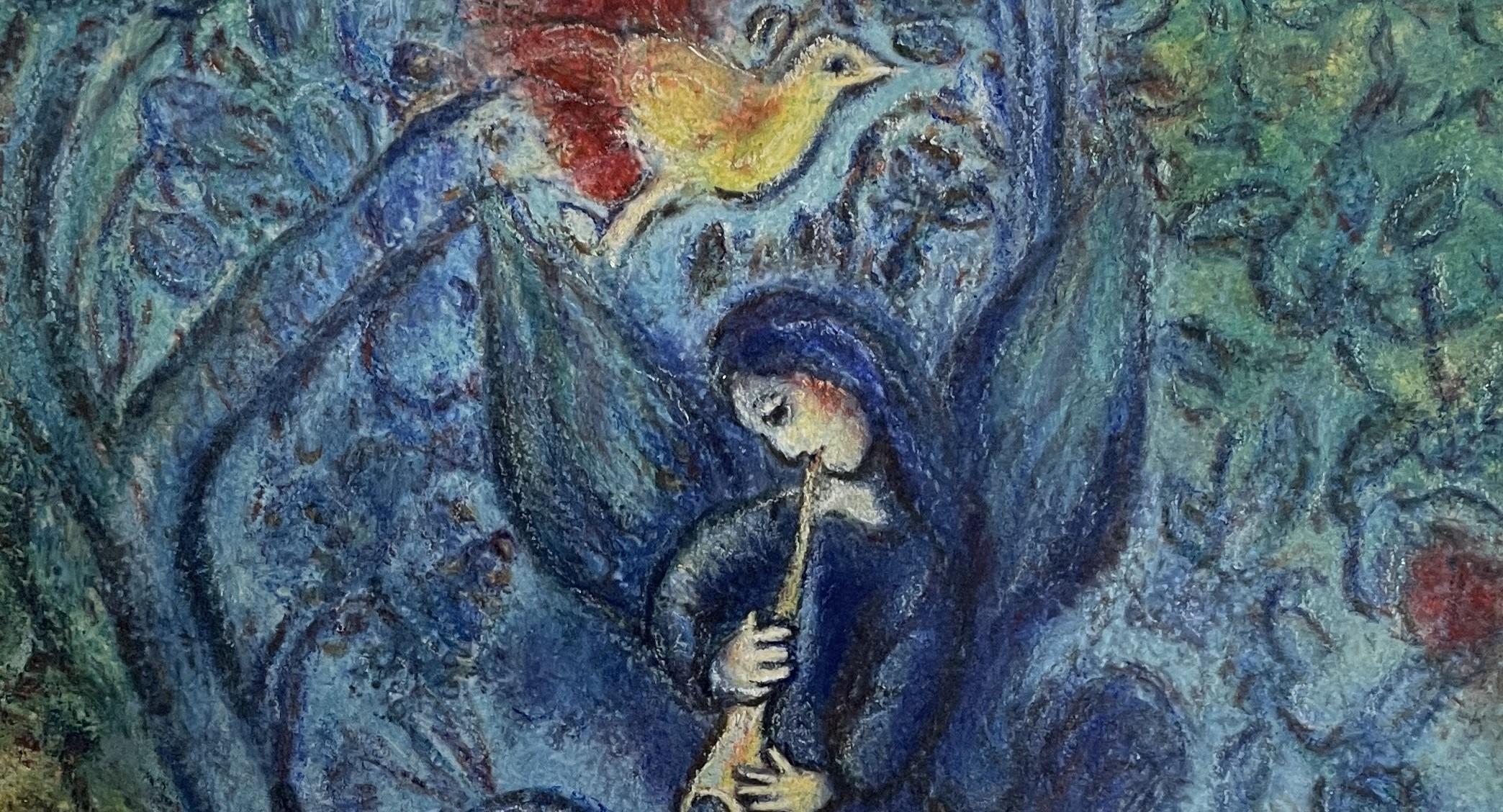日本語-Englishー台灣華語
ピーテル・ブリューゲル「バベルの塔」

The Tower of Babel
巴別塔

The Tower of Babel
巴別塔
ピーテル・ブリューゲルは16世紀ネーデルランド(現在のベルギー、オランダ、ルクセンブルク)で活躍した巨匠である。1525年頃に生まれ1569年に亡くなったとされる。イタリアではルネサンス期に属するが、北方ではまだ中世末期とされた時代である。ブリューゲルはイタリアを旅し、ルネサンスの息吹を北方にもたらした先駆的存在であるが、その世界観には中世的面影を色濃く残している。ブリューゲルの油絵は現在40点ほどが知られているが、そのうち12点がウィーン美術史美術館に収蔵されている。ブリューゲルはこの主題で少なくとも3枚描いており、うち2枚が現存している。一枚はウィーン美術史美術館に、もう一枚はオランダ・ロッテルダムのボイマンス美術館に所蔵されている。1563年にウィーンの「バベルの塔」を描いたすぐ後に、ロッテルダムの「バベルの塔」を描いたとされている。ウィーンの作品の方がロッテルダムの作品より大きく、細部まで丹念に描かれている。私はブリューゲルの作品の中でも圧倒的存在感を誇るウィーンのバベルの塔を描くことにする。
バベルの塔は旧約聖書の創世記第11章に記されている伝説の塔である。ノアの洪水後、生き残ったノアの子孫であるニムロデ王は、自身の力を誇示するために神の国まで届く高い塔を築き始める。おごり高ぶった人間に怒った神は、統一した言語を人間から取り上げる。そのため収拾しがたい混乱に陥り、塔は未完のまま放置されたとの伝説である。実在したバビロニアの塔は方形だったことが発掘によって実証されているが、この絵の塔は中世の考えを色濃く反映し、コロッセオに似て円形に描かれている。バベルの塔はバビロニアの天文学に由来して7層建てである。頂上の7階には神殿があったとされる。ブリューゲルの描いたこの絵は工事中の塔を描いたもので、上部は既に雲にまで達している。バベルの塔には完成した部分と未完成の部分が混在している。完成した塔のいくつかの層には人が住み、洗濯物が干され、庭さえも作られている。その一方で未完成の部分は建設している途上から崩れ落ち廃墟と化している。バベルの塔は岩山を崩しながら建設されている。麓には小屋が立ち並び、周囲には切り出された石材が散在している。資材を運搬する帆船が港に停泊している。たくさんの作業員が牛や馬を使って荷物を運び、クレーンのような重機を使って建設が着々と進んでいるように見える。手前には工事の進捗状況を視察に来た王が描き込まれ、遥か遠くには長大な城壁が見える。背景には豊かな街並みが広がり、帆船が港に盛んに出入りして、国の繁栄を感じさせる。
ブリューゲルが生きた時代は、カトリックの腐敗した聖職者に抗議する形でプロテスタントが勃興し、熾烈な勢力争いを繰り広げていた。バベルの塔は天まで届く塔を建てようとした人間の高慢と不遜を示すとも言われるが、一つの民に統一しようとしたことが罪であることを暗示しているのかもしれない。私はバベルの塔から愚かな人間たちを排除して、ただそこにある人間の痕跡だけを描くことにする。麓の街並みは緑に覆い、帆船も城壁も記憶の彼方に消してしまう。不穏な雲が空に漂い嵐を予感させる。私は砂嵐で全体を覆うことにする。ブリューゲルのバベルの塔を描いていると、能うる限りの労力を注ぎ込んだヤン・ファン・エイクの気概が垣間見える。一つの画面に同時に進行する様々な人間ドラマを描き込むその画面構成は、ヒエロニムス・ボスのように人間の多面的心を白日夢のように映し出す。推敲を重ねたブリューゲルの絵には、時代を超えた生命が宿っていることを感ぜずにはいられない。
The Tower of Babel
Pieter Bruegel was a master who flourished in the 16th century Netherlands (present-day Belgium, the Netherlands, and Luxembourg). He is believed to have been born around 1525 and died in 1569. While Italy was part of the Renaissance period, the era in which he lived was still considered the late medieval period in the north. Bruegel traveled to Italy and was a pioneering figure who brought the breath of the Renaissance to the north, yet his worldview retains a distinctly medieval aspect. About 40 of Bruegel’s oil paintings are known today, with 12 of them housed in the Kunsthistorisches Museum in Vienna. Bruegel painted at least three pieces on this theme, two of which survive; one is in the Kunsthistorisches Museum in Vienna, and the other is in the Boijmans Van Beuningen Museum in Rotterdam, Netherlands. It is said that he painted the “Tower of Babel” in Vienna shortly after the one in Rotterdam in 1563. The Vienna piece is larger and more meticulously detailed than the Rotterdam piece. I decide to draw the Tower of Babel in Vienna, which boasts an overwhelming presence among Bruegel’s works.
The Tower of Babel is a legendary tower mentioned in Chapter 11 of the Book of Genesis in the Old Testament. Following Noah’s flood, King Nimrod, a descendant of Noah, began building a high tower to reach the kingdom of God to show off his power. Angered by the hubris of humans, God took away their unified language, leading to irreparable confusion, and the tower was left unfinished. The actual tower of Babylon, proven to be square through excavations, is depicted in this painting as circular, reflecting medieval thoughts, resembling the Colosseum. The Tower of Babel, inspired by Babylonian astronomy, was built with seven levels, with a temple said to be on the seventh floor. Bruegel’s painting depicts the tower under construction, reaching into the clouds at its top. The Tower of Babel shows a mix of completed and unfinished sections; some layers of the completed tower are inhabited, with laundry hanging and even gardens made, while the unfinished parts are crumbling ruins. The tower is being constructed by breaking down a rocky mountain, with huts lined up at the foot and cut stones scattered around. Sailing ships transporting materials are docked at the port. Numerous workers, using oxen and horses to carry loads and cranes for construction, seem to be steadily progressing. The king inspecting the progress of the work is depicted in the foreground, with a long city wall visible in the far distance. In the background, a prosperous cityscape spreads out, with ships busily entering and leaving the port, reflecting the prosperity of the nation.
During Bruegel’s time, Protestants emerged in protest against the corruption of Catholic clergy, leading to fierce power struggles. The Tower of Babel is said to represent the arrogance and insolence of humans attempting to build a tower reaching to heaven, possibly hinting that the sin was in trying to unify one people. I decide to exclude the foolish humans from the Tower of Babel, drawing only the traces of humans left behind. The city at the foot will be covered in green, and both the sailing ships and city walls will be erased from memory. Ominous clouds will drift in the sky, foreshadowing a storm. I decide to cover the entire scene with a sandstorm. Drawing Bruegel’s Tower of Babel, one can glimpse the spirit of Jan van Eyck, who poured his utmost effort into his work. The composition of his paintings, incorporating various human dramas unfolding simultaneously within a single frame, reflects the multifaceted nature of humanity in a daydream-like manner, similar to Hieronymus Bosch. One cannot help but feel that Bruegel’s meticulously revised paintings are imbued with a timeless vitality that transcends eras.
彼得·布魯哲爾「巴別塔」
彼得·布魯哲爾是16世紀在荷蘭(今天的比利時、荷蘭和盧森堡)活躍的大師,約於1525年出生,於1569年去世。雖然他生活在意大利是文藝復興時期,但在北方仍然被視為中世紀末期。布魯哲爾旅行到意大利,將文藝復興的氣息帶到北方,是一位開創性的存在,但他的世界觀深深地保留著中世紀的影子。布魯哲爾的油畫作品約有40件被知曉,其中12件收藏於維也納美術史博物館。布魯哲爾至少畫了三幅「巴別塔」,其中兩幅存世,一幅在維也納美術史博物館,另一幅在荷蘭鹿特丹的博伊曼斯美術館。據說他在繪製維也納的「巴別塔」後不久,就繪製了鹿特丹的作品。維也納的作品比鹿特丹的更大,並且描繪得更加細緻。
巴別塔是舊約聖經創世記第11章中的傳說塔樓。諾亞洪水後,諾亞的後代尼姆羅德王為了展示自己的力量,開始建造一座通往神國的高塔。自高自大的人類激怒了神,神就從人類中取走了統一的語言。因此,人們陷入了難以收拾的混亂,塔樓被遺棄,未完成。實際上存在的巴比倫塔是方形的,這一點已經通過挖掘得到證實,但這幅畫中的塔樓反映了中世紀的思想,畫成了類似羅馬鬥獸場的圓形。巴別塔基於巴比倫天文學而建造,是七層高。頂層的第七層據說有一座神廟。布魯哲爾畫的這幅畫描繪了一座正在建設中的塔,頂部已經達到雲層。巴別塔有完工和未完工的部分,完工的幾層住著人,掛著洗衣服,甚至建有花園。而未完工的部分則在建造中倒塌,成為廢墟。塔是在挖掘岩石時建造的。山腳下有許多小屋,周圍散落著切割好的石材。運輸材料的帆船停靠在港口。許多工人正在使用牛和馬運輸物品,使用起重機等重型機械,建設似乎正在穩步進行。前面描繪了來視察工程進展的國王,遠處可見長城。背景是一個繁榮的城市景觀,帆船頻繁進出港口,讓人感受到國家的繁榮。
布魯哲爾生活的時代,新興的新教徒在抗議天主教聖職者的腐敗,進行激烈的勢力爭鬥。巴別塔被認為是人類試圖建造通往天國的塔顯示的驕傲和不敬,但也許暗示了試圖統一人類是一種罪行。我決定排除掉愚蠢的人類,只描繪巴別塔中存在的人類痕跡。山腳下的城市被綠色覆蓋,帆船和城牆都被遺忘。天空飄浮著不祥的雲彩,預示著暴風雨的來臨。我決定用沙塵暴覆蓋整個畫面。畫布魯哲爾的巴別塔時,可以隱約看到揚·范·艾克傾注全部努力的精神。這種將多個同時發生的人類戲劇描繪在一個畫面上的構圖,像是希羅尼穆斯·博斯那樣,將人的多面性心靈如白日夢般展現出來。經過反覆推敲的布魯哲爾畫作,讓人感受到超越時代的生命力。

